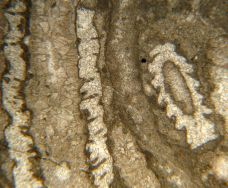The Triassic period
At the beginning was the sea…
Throughout the Triassic (the geological period 252–201 million years ago) the landmasses that existed were combined into the one large supercontinent of Pangaea, surrounded by a vast ocean called Panthalassa. At the equator, an arm of this ocean intruded deeply into the centre of Pangaea forming an ancient sea called the Tethys, which divided Pangaea into Gondwana in the south and Laurasia in the north.
The Tethys itself was divided into two basins: the Palaeotethys in the north and the Neotethys in the south, each present over slightly different but overlapping intervals of time and separated by the Cimmerian continent, a strip of land composed of many small tectonic plates. Monte San Giorgio and the wider Southern Alpine region were located at the western end of the Tethys.
The paleogeographic situation in the Middle Triassic with the supercontinent Pangaea and the Tethys, part of the old ocean Panthalassa, © Ron Blakey Colorado Plateau Geosystems, USA
.jpg)





